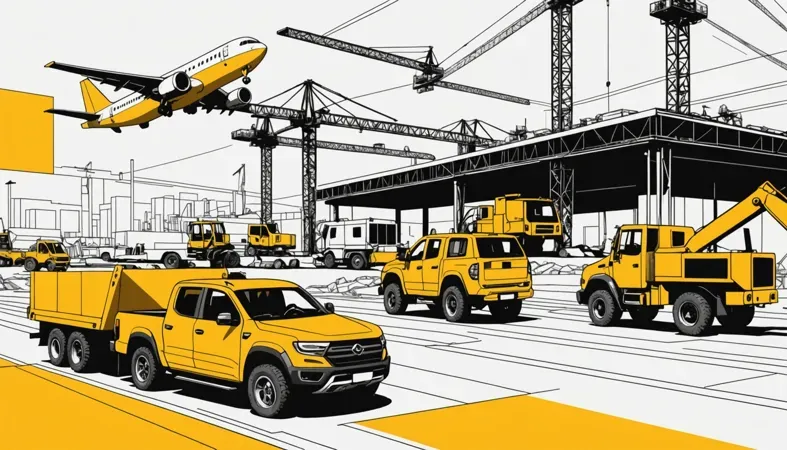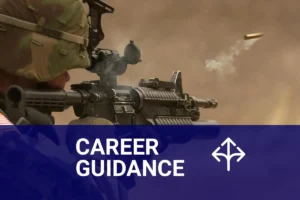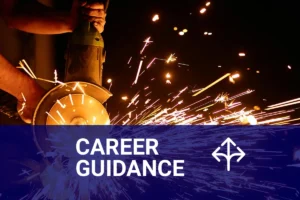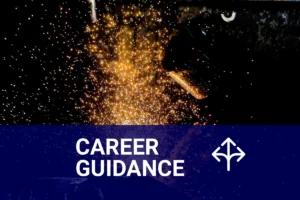What Do You Do As a Welder? | Duties, Responsibilities, Job Types
Published on: June 1, 2025 | Last modified: March 4, 2025
By: Joe Carter
You may ask, what do you do as a welder? It’s crucial because understanding their role’s importance helps you appreciate the intricacies of construction and repairs. I’ve seen firsthand how welding impacts everything from buildings to trails. A tiny mistake can lead to significant failures.
In this guide, we’re diving into what it means to be a welder. We’ll explore what you can do as a welder, the types of welders available, key steps to become one, factors influencing welding practices, common issues you might face, aftercare and inspection tips and real-world use cases of welding. You’ll get a clear picture of the duties and responsibilities of a welder.
Contents
What Does a Welder Do?
A welder joins metal parts using heat to create strong, enduring connections. They often use MIG, TIG, or stick welding techniques for various tasks. Welders play a crucial role in construction, manufacturing, and automotive industries due to their expertise.

How Does Being a Welder Work?
A welder is a skilled tradesperson who joins metal parts using heat, pressure, or both. The process often involves techniques like MIG (Metal Inert Gas) and TIG (Tungsten Inert Gas) welding. The average welder works with temperatures over 1,093 degrees Celsius (2,000 Degrees Fahrenheit) daily. Studies show there are about 400,000 welders in the U.
S., making it a vital profession in various industries.
To excel as a welder, you need technical expertise. You must memorize different metal compositions and read blueprints accurately to ensure your work is precise.
I’ve been down this road, and it’s not just about fusing metals; it’s about maintaining safety standards and quality. You might be welding in construction, automotive, or aerospace industries, tackling tasks like repairing machinery or fabricating structures. The projects welders take on vary widely, and each one teaches you something new while enhancing your skills.
Types Of Welders
What types of welders might you encounter?
MIG Welders
MIG (Metal Inert Gas) welding uses a continuous wire feed. As a MIG welder, you create strong joints quickly, perfect for projects like car bodies. To start, set up your machine, select the appropriate metal wire (Often ER70S-6), and adjust the speed and voltage based on the metal thickness.
TIG Welders
TIG (Tungsten Inert Gas) welding allows precise control for thin metals. In this role, you focus on creating clean, strong welds, ideal for stainless steel and aluminum. To do this, hold a tungsten electrode, manually feed a filler rod, and maintain a steady hand to ensure proper heat balance. When employing techniques such as welding uphill, you can achieve greater penetration and strength in vertical welds, enhancing overall weld quality. For more information on this technique, explore how to weld uphill effectively.
Stick Welders
Stick welding uses a consumable electrode coated in flux, which is great for outdoor projects. As a stick welder, you’ll often work on steel structures or pipelines. To start, set up your electrode holder, adjust the amperage for the material thickness, and strike an arc to create the weld pool. However, you should be cautious as welding light can affect devices like cameras, which is discussed further in this guide about welding light impact.
Flux-cored Arc Welders
This process uses tubular wire filled with flux to protect the weld pool. As a flux-cored arc welder, you work on projects that require portability and efficiency, like construction. To begin, select the appropriate flux-cored wire and set your voltage and speed based on the material type. Proper handling of equipment is crucial to avoid common issues such as welding burns. For information on treating welding burns on skin, ensure you follow recommended safety protocols.
Submerged Arc Welders
Submerged arc welding covers the arc with granular flux, providing a clean weld. As a submerged arc welder, you focus on large-scale, heavy-duty structures. To execute, set up the machine, automatically feed the wire, and monitor the process for consistent depth. Understanding different welding positions can enhance your skills, which you can explore more in various welding positions.
.
We’ve wrapped up the different types of welders here. Next up, we’ll look at the essential skills for welders.
What Skills Are Essential for Welders?
Let’s break down the essential skills welders need to succeed.
| Skill | Description | Importance |
|---|---|---|
| Attention to Detail | You need close observation to spot defects and imperfections. | High – Small mistakes can cause big problems! |
| Technical Knowledge | Understanding welding processes, materials, and equipment. | High – Essential for quality work and safety. |
| Manual Dexterity | Using hands and tools skillfully is crucial for clean welds. | Medium – Good control leads to better results. |
| Problem-Solving Skills | Ability to troubleshoot issues during welding. | Medium – Helps in fixing common welding issues. |
| Stamina | Working long hours can be demanding, physically. | High – Strength and endurance matter, especially in tough conditions. |
We covered essential skills for welders here. Next, we will cover the steps to become a welder.

Steps to Become a Welder
Here are the key steps to become a welder.
Choose Your Specialty
Select a specific welding type, like MIG, TIG, or Stick welding. Each type has unique qualities suited for different materials. For example, MIG is often used for thin metals, while TIG excels at intricate work with stainless steel. Choose based on your interests and job market demand.
Research the job market in your area. According to the Bureau of Labor Statistics, there were about 563,000 welders in the U.
S. in 2022. Knowing the available welding jobs near you will guide your choice. Picking a specialty that employers need will increase your chances of employment.
Complete Formal Training
Look for a technical school or community college offering welding programs. Most last 6 to 12 months and provide essential hands-on training. Average tuition ranges from $4,000 to $20,000. Consider obtaining a welding certification to stand out to employers. Explore online courses that complement your learning. Additional practice through virtual simulations can enhance your skills. The more training and classes you take, the better prepared you’ll be for real-world welding jobs. A key factor in successful welding practices is sourcing quality materials, which you can learn more about acquiring metal for welding.
.
Gain Practical Experience
Seek apprenticeships or entry-level positions right after your training. Many employers prefer candidates with at least one year of experience. On-the-job experience exposes you to various materials and techniques. Hands-on experience is invaluable for understanding the nuances of welding. Network with industry professionals to find opportunities. Part-time or freelance jobs can also enhance your resume. Remember, experience builds skills and confidence, making you a more competitive candidate. Additionally, understanding safety measures is crucial, as some hazards like ultraviolet radiation can lead to welding-related sunburn.
Develop Your Skills Continually
Keep learning even after you get a job. Join workshops and attend industry conferences to stay current with technologies and methods. Focus on refining in-demand specialized skills, like robotic welding or underwater welding. Continuous learning will help you advance in your career.
Moreover, consider obtaining advanced certifications. Many welders boost their earnings by as much as 20% after receiving specialized certifications. The more you invest in your skill set, the better opportunities you’ll find.
You should now have a good understanding of the steps involved in becoming a welder. In the next part, we’ll discuss factors influencing welding practices.
Factors Influencing Welding Practices
What factors affect your daily tasks as a welder?
Type Of Material
Each material has distinct properties—like melting points and tensile strength. For example, aluminum melts at around 660°C (1220°F), while carbon steel melts between 1425°C and 1540°C (2600°F and 2800°F). Knowing the material influences your technique and tools.
Welding Technique
Different welding methods, like MIG (Metal Inert Gas) and TIG (Tungsten Inert Gas), offer unique benefits. MIG is faster and suitable for thicker materials, while TIG provides precision for thinner materials. Selecting the right technique improves overall efficiency and results. Understanding the causes of electric shock is crucial in ensuring safety in the welding industry.
Environmental Conditions
Welding outdoors on a windy day can distort the weld. Temperature and humidity also matter. Extreme conditions affect the cooling rate, leading to weaker bonds.
Equipment Quality
Quality matters—investing in good equipment boosts efficiency and reduces defects. A high-quality welding machine operates at optimal voltage, with some machines offering adjustable settings for various materials, ensuring a strong bond.
When considering the operational efficiency and safety measures in welding, it is important to evaluate how dangerous welding is to ensure a safe working environment.
Level Of Experience
Your experience level affects your skill with techniques and materials. Entry-level welders need more guidance, while seasoned professionals adapt easily to new challenges. Experience significantly impacts job opportunities and responsibilities. For specific applications such as connecting specialized components, you can explore how to weld thermocouple wire.
We covered the factors that influence welding practices here. Next, we will cover common issues you might encounter.
Common Issues You Might Encounter
Here are common issues you, as a welder, may face in your work.
Inconsistent Welds
You might find some lava holes don’t merge well. Look for gaps in beads. To fix this, check your travel speed and settings. Ideal speeds are usually 5 to 15 inches per minute (12.7 To 38.1 Cm/min).
Burn Through
I’ve faced this before. It happens when the heat’s too high. Check your amperage and keep it consistent. Lowering voltage settings can help prevent this.
Porosity in Welds
If you see small holes or air bubbles, that’s porosity. Inspect your gas supply and clean your metals. Aim for zero contamination.
Electrode Contamination
If electrodes are dirty, you can get weak welds. Look for discoloration. Clean them with a wire brush and ensure there’s no moisture nearby.
Equipment Malfunction
You might face equipment failures, like voltage issues. If you see unstable arcs, check your cables and connections. Regular inspections can maintain safety.
Frequently Asked Questions (FAQs)
Here are some questions I typically get asked about welding.
What Are the Duties and Responsibilities Of a Welder?
Welders’ duties and responsibilities include interpreting blueprints and specifications. They must ensure that welds meet specifications, which may include checking for strength and appearance.
What Jobs Can You Get As a Welder?
You can get various jobs as a welder, including structural welder, pipe welder, and MIG or TIG welder. The job market is promising, with a projected growth of 3% from 2020 to 2030 in the welding industry.
Is Being a Welder a Hard Job?
Yes, being a welder can be a hard job. It requires physical strength, endurance, and precision. Welders often work in challenging environments, including extreme temperatures or heights.
What Can You Do As a Welder?
As a welder, you can work on a wide range of projects, from constructing buildings to repairing pipelines. The skills you develop allow you to apply them in various industries, like construction, automotive, and manufacturing, offering diverse career opportunities in welding.
What Are 5 Duties Of a Welder?
Five key duties of a welder include reading blueprints, setting up welding equipment, performing welds, inspecting welds, and maintaining tools and equipment. These tasks ensure quality and safety in welding operations.
Wrap-up
Phew, we covered a lot. We discussed what a welder does, how the work unfolds, the various types of welders, steps to become one, factors influencing practices, common issues encountered, aftercare, inspection, advanced tips, use cases, and some alternative options. That’s quite the welding toolbox, right?
So, what do you do as a welder? You connect metal pieces using heat or pressure to create strong bonds. I hope these welding tips prove valuable to you and help you navigate the duties, responsibilities, and job opportunities in welding, whether that’s structural welding, pipe welding, or something else. Remember, welding’s not just a job—it’s an essential skill that shapes our world.
If you’re eager to delve deeper into the world of welding and explore more insightful articles, visit our homepage at What is Welding for a wealth of expert blogs and welding advice.
References
- American Society of Mechanical Engineers. (2019). ASME Section IX: Welding and Brazing Qualifications. New York, NY: ASME.
- Little, R. L. (1999). Welding and Welding Technology. New York, NY: McGraw-Hill Education.
Joe Carter is a retired welding professional with over 40 years of hands-on experience in the industry, spanning ship repair, structural welding, and even underwater projects. Joe is a master of MIG, TIG, and Stick welding. Passionate about mentoring the next generation of welders, Joe now shares his decades of expertise and practical insights to help others build rewarding careers in welding.
Construction, MIG Welding, Pipe Welding, TIG Welding, Welder Duties, Welding, Welding Careers, Welding Equipment, Welding Techniques







